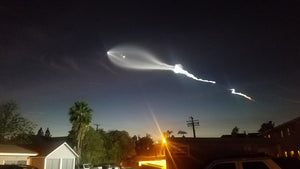
October-Mars at Opposition and Orionids Meteor Shower
October 13th, Mars reaches opposition, when it is 180 degrees from the sun in our sky. In other words, Earth passes more or less between Mars and the sun. With a relatively small telescope, the planet’s surface features begin to appear. Three main regions can be seen: the polar caps, lighter areas of rust-colored dust, and darker areas of exposed volcanic rock (picture below). Look for Mars in the eastern sky on the evening of the 13th it will be observable for the entire night. We will have a waning crescent moon this evening so there will be minimal light interference.
October 21st the Orionids meteor shower, will peak and is expected to produce up to 20 meteors per hour.
Remnants from the Orionids as well as the Eta Aquarids in May, come from Halley's Comet. The comet is a famous visitor to the inner solar system, making an appearance every 76 years. Last visible from Earth in 1986, and will approach again in 2061. The comet leaves behind a dust trail of small fragments that the Earth travels through twice a year.
The Orionids are easy to spot because they originate from the highly-recognizable constellation Orion. Look for Orion in the eastern sky on the evening of the 21st. We will have a waxing crescent moon this evening so there will be minimal light interference.
The key to observing the meteor shower is darkness. The farther you can get from light pollution the better you will be able to absorb light. Let your eyes adjust to darkness for 30 minutes. Dress warmly. Bring a reclining chair, or spread a thick blanket over a flat spot of ground. Lie down and look up somewhat toward the Eastern sky. Meteors can appear in any part of the sky, although their trails will tend to point back toward the radiant Orion(below).
We also have 10% off our entire Revolution Imager collection this month. It's a great time to learn image stacking with a new imager system!
OCtelescope







